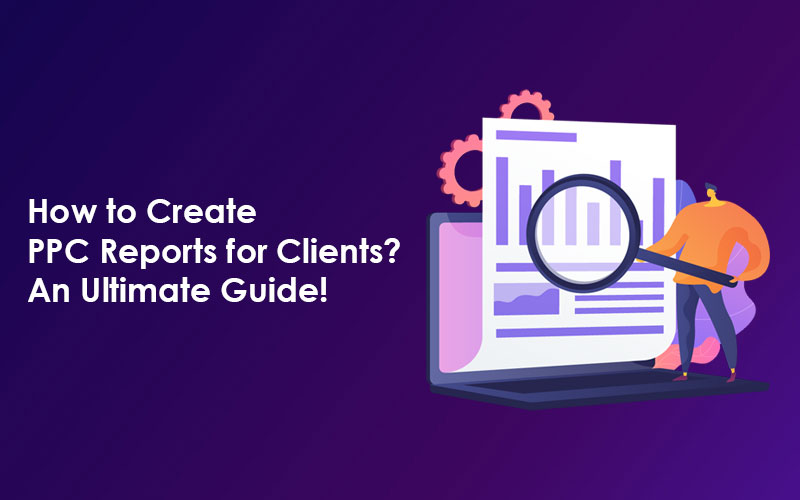In the ever-evolving world of digital marketing, staying connected with clients is paramount. Enter PPC reports, the secret weapon for effective client communication and transparency. These reports not only bridge the gap between marketers and clients but also provide invaluable insights into the performance of pay-per-click campaigns. From deciphering complex data to fostering trust and accountability, PPC reports are the lifeblood of a successful client-agency relationship.
Imagine this: a visually captivating report that effortlessly communicates the story behind your PPC campaigns, leaving clients astounded by the level of detail and clarity. Well-structured PPC reports offer a multitude of benefits that go beyond mere data presentation. They empower clients to make informed decisions, showcase the impact of marketing efforts, and inspire a collaborative approach to campaign optimization. By painting a comprehensive picture of performance, these reports become a catalyst for success, driving growth and exceeding client expectations.
How to Create PPC Reports for Clients?
Are you ready to unlock the secrets of creating effective PPC reports for your clients? This guide will walk you through the step-by-step process of crafting PPC reports that captivate, inform, and empower your clients. From selecting the right metrics to presenting data in a visually appealing format, we’ll provide you with the tools and insights to create reports showcasing your PPC campaigns’ success. Get ready to take your client communication to the next level as we dive into the world of creating impactful PPC reports!
Step 1: Defining Client Objectives and Expectations
Creating PPC reports that truly resonate with clients begins with a deep understanding of their objectives and expectations. This requires conducting thorough discussions to uncover their goals and vision for the campaign. It goes beyond surface-level conversations; it involves delving into their desired achievements.
During these discussions, active listening is crucial to grasp their aspirations while carefully analyzing their specific requirements. Whether their focus is on brand awareness, website traffic, or conversions, it’s important to delve into the details and align the campaign objectives with their expectations. This alignment ensures a shared understanding of what success means to them.
Moreover, it is crucial to remember that each client has their own individual objectives, which can vary greatly. Some clients may prioritize achieving immediate results, while others may have a more long-term perspective in mind. To ensure a successful campaign, maintaining open lines of communication is essential. Regular check-ins and updates enable both parties to stay aligned and informed, fostering a strong collaborative relationship.
Step 2: Choosing the Right Metrics and KPIs
Choosing the right metrics and key performance indicators (KPIs) is critical in creating PPC reports that effectively measure campaign performance. It involves identifying the most relevant metrics that align with the client’s goals and providing valuable insights into the success of the campaigns.
When selecting metrics, it’s essential to focus on those directly related to the client’s objectives. For example, metrics such as conversion rate, cost per conversion (CPC), and return on ad spend (ROAS) would be highly relevant if the goal is to increase conversions.
In addition to metrics, KPIs are crucial in evaluating campaign performance. KPIs are specific metrics that help gauge success in relation to predefined goals. They provide a standardized framework for measuring progress and serve as benchmarks for comparison.
It’s important to consider the client’s unique goals, industry benchmarks, and the specific campaign strategies being implemented to choose the most suitable KPIs.
Step 3: Organizing and Visualizing Data
A clear and structured report format is essential to ensure that the information is presented logically and easily. This involves organizing sections, using headings and subheadings, and maintaining a consistent layout throughout the report. By providing a well-defined structure, clients can quickly navigate the report and locate the necessary information.
In addition to a clear structure, visualizing data through charts, tables, and visual aids enhances the readability and impact of the PPC reports. Visual elements can transform complex data into easily digestible insights. Charts and graphs help illustrate trends, comparisons, and patterns, making it simpler for clients to understand the performance at a glance. Tables can be used to present specific metrics and data points in a structured format. Visual aids, such as screenshots or campaign screenshots, can provide concrete examples of ad creatives or landing pages.
Step 4: Analyzing and Interpreting Data
Data analysis goes beyond surface-level metrics and enables a deeper understanding of campaign performance. It uncovers strengths, weaknesses, and opportunities for improvement by examining various campaign elements. Analyzing data trends over time provides insights into the effectiveness of specific strategies and changes made throughout the campaign, allowing for informed decision-making and optimization.
Evaluating campaign performance against predetermined benchmarks is another essential aspect of data analysis. By setting benchmarks or targets at the outset of the campaign, you can assess the progress and success of your efforts.
In interpreting the data, providing context and explanations to clients is crucial. Simply presenting numbers and metrics without proper analysis and insights can be confusing and overwhelming. By offering interpretations and explanations for the data points, you provide clients with a deeper understanding of the performance and facilitate informed decision-making.
Step 5: Tracking Progress Over Time
Tracking progress over time also helps to establish a baseline for comparison and evaluation. By comparing current performance with previous periods, you can assess whether the campaign is on track, exceeded expectations, or requires adjustments. This historical context provides valuable insights into the effectiveness of different tactics and enables data-driven decision-making.
Furthermore, by monitoring progress over time, you can identify potential issues or improvement areas. If certain metrics are not meeting expectations or performance stagnates, you can investigate and make necessary adjustments to optimize the campaign’s performance.
Step 6: Providing Actionable Recommendations
Through data analysis and interpretation, actionable insights can be derived from the PPC reports. These insights give clients a clear understanding of what is working well and what areas need attention. By highlighting actions that can be taken based on the data, clients are empowered to make informed decisions to optimize their campaigns.
Actionable recommendations may include suggestions for strategic adjustments or experiments. For example, if certain ad variations are performing exceptionally well, recommending expanding their reach or allocating more budget to them can yield positive results. Likewise, if certain keywords or targeting options are underperforming, recommending refining or eliminating them can help improve campaign efficiency.
Furthermore, providing actionable recommendations may involve suggesting new strategies or testing innovative approaches. This can include trying out new ad formats, exploring different audience segments, or leveraging emerging trends in the industry.
Step 7: Tailoring Reports to Client Preferences
It’s important to remember that not all clients may have a deep understanding of digital marketing concepts and terminology. To overcome this, using clear and concise language that avoids jargon and technical terms is essential.
In addition to using accessible language, providing context and explanations for data points is essential. Clients need to understand the meaning and significance of the data presented in the report. Clients can better comprehend the insights and make informed decisions by offering clear explanations of the data’s relevance and how it connects to their campaign objectives.
Visual aids such as charts, graphs, and tables can greatly enhance clarity and understanding. These visual representations provide a visual summary of the data and make it easier for clients to grasp key information at a glance. However, it’s important to accompany these visuals with concise explanations to ensure clients fully understand the message.
Step 8: Ensuring Clarity and Client Understanding
It’s important to remember that not all clients may have a deep understanding of digital marketing concepts and terminology. To overcome this, using clear and concise language that avoids jargon and technical terms is essential.
In addition to using accessible language, providing context and explanations for data points is essential. Clients need to understand the meaning and significance of the data presented in the report. Clients can better comprehend the insights and make informed decisions by offering clear explanations of the data’s relevance and how it connects to their campaign objectives.
Visual aids such as charts, graphs, and tables can greatly enhance clarity and understanding. These visual representations provide a visual summary of the data and make it easier for clients to grasp key information at a glance. However, it’s important to accompany these visuals with concise explanations to ensure clients fully understand the message.
The Bottom Line:
Now that you have comprehensively understood how to create PPC reports for clients, you recognize the importance of ensuring clarity and client understanding throughout the process. At SEO Brisk, we fully grasp the significance of transparent and effective reporting in driving successful PPC campaigns. When you opt for our PPC services, rest assured that our agency will go the extra mile to produce detailed and easily understandable reports highlighting your campaigns’ true impact. Contact us today, and let us elevate your PPC campaigns to new heights through our commitment to clear and insightful reporting.





